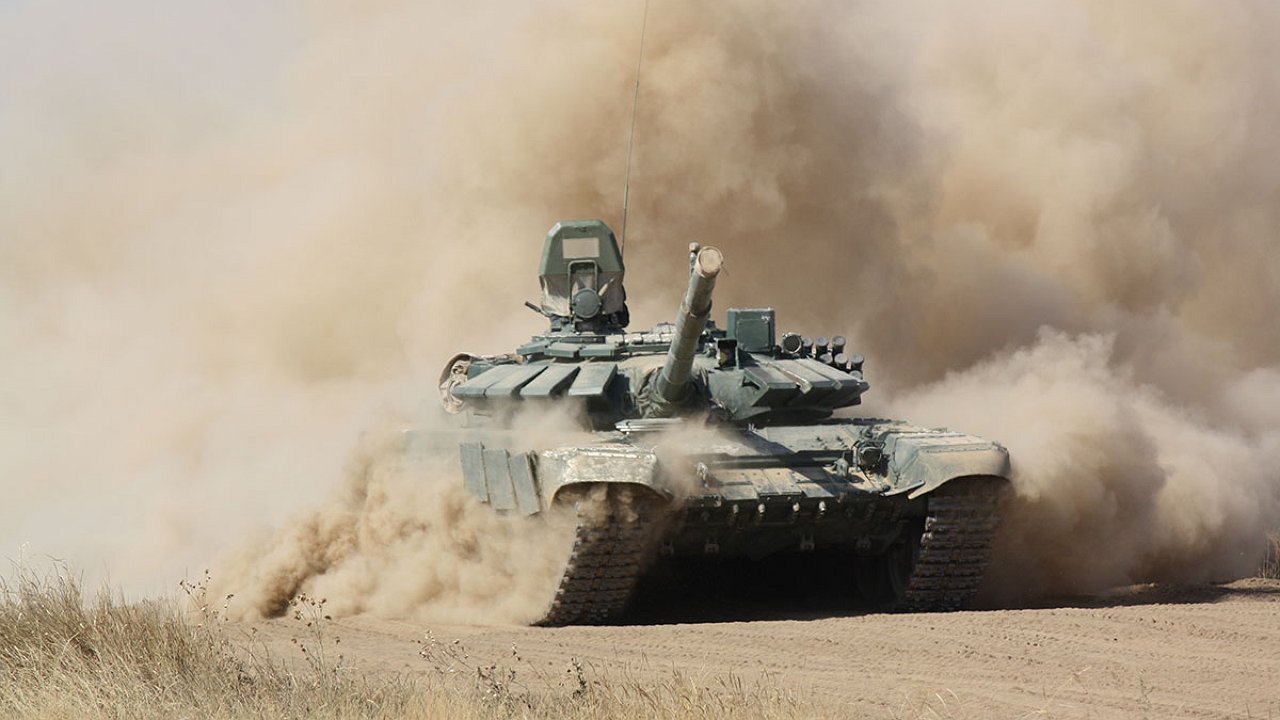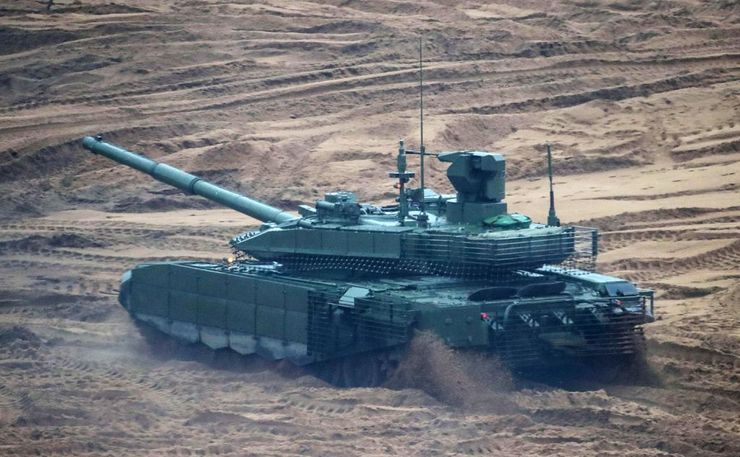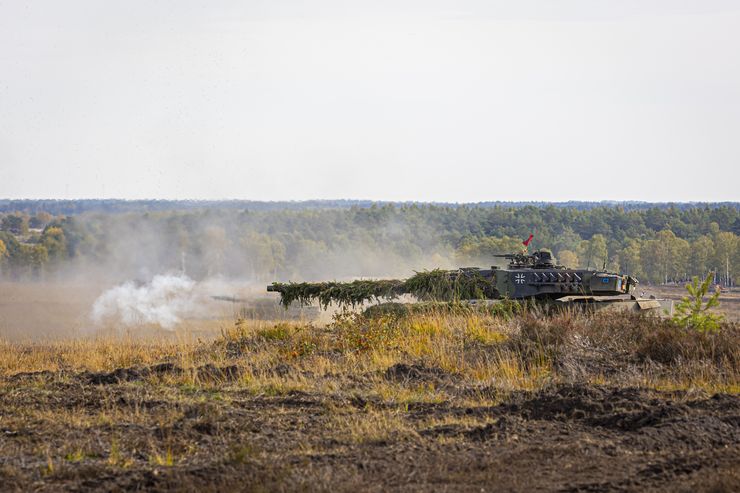Why NATO tanks are worse and better than Russian ones
- December 27, 2023
- 0
No country in the world has yet learned how to make ideal military equipment. This truth is manifesting itself “in full force” on the Ukrainian battlefield. Recently, the
No country in the world has yet learned how to make ideal military equipment. This truth is manifesting itself “in full force” on the Ukrainian battlefield. Recently, the

Recently, the general director of the state-owned company Rostec, Sergei Chemezov, said in one of his interviews that Russian designers of armored vehicles are “following” some of the technical solutions of their Western colleagues. Captured equipment captured by Russian troops in the Northern Military District zone is sent to the rear and carefully studied. For example, it is known that the Leopard 2 tank and almost the entire range of armored personnel carriers, infantry fighting vehicles and armored vehicles supplied by NATO to Ukraine fell into our hands. There are no publicly available reports of captured Challenger 2s. Although several English tanks were burned by Russian troops.
After such an embarrassment, they were apparently removed from the battle line – from the danger zone. But the American Abrams, delivered to the armed forces of Ukraine last fall, still has not reached it. They obviously don’t want to repeat the negative experience of British technology with the ‘Americans’.
Characteristically, Chemezov does not engage in mischief in the above-mentioned interview. Yes, he calls the Russian T-90 Proryv tank the best tank in the world among serial combat vehicles. But he also says that Russian gunsmiths can learn a lot from Western designers.
Meanwhile, the basic strengths and weaknesses of Russian and Western tanks are not a secret to anyone. In particular, the indisputable advantage of domestic equipment over Western equipment is its low combat weight.
For the Russian tank T-90 “Proryv” this is equal to 48 tons. Its “colleagues” in service in Ukraine – the modernized T-80 and T-72 – weigh about 46 tons. Against this backdrop, Western Leopard 2, Challenger 2 and Abrams M1 look like mastodons. They all have a combat weight of more than 60 tons. And Challenger 2, if the standard extra armor had not been removed from it before being sent to Ukraine, it would have weighed a total of 75 tons!
Such weight is no hindrance when tank crews are faced with the task of driving natives through the waterless deserts of Iraq or the rocky gorges of Afghanistan. And in the Chernozems of the “homeland of the proto-Ukrainians”, which immediately become weak from the rain, the Western giants begin to drown. It seems like a tank can drive anywhere. Like any other technique, it “falls on its belly” and turns into “real estate.” But pulling 60 tons of iron out of a swamp isn’t like pulling a stuck truck with a quick “pull” on a cable.
But the ‘westerners’ have their strengths. Until recently, the Russian school of tank construction favored transmissions with reduced energy losses. But for this you have to pay with a low maximum reverse speed. For the T-80 it does not exceed 11 km/h, and for other Russian tanks it is even less – about 4 km/h. Even though it is at least 30 km/h for western cars. In Ukrainian conditions, a high reverse speed is useful.
After all, here it is often necessary not only to jump into a firing position like cavalry, but also to quickly “get rid of it” – before the “reaction” arrives. So in such cases, “Soviet style” tanks must turn their stern towards the enemy to speed up the evacuation. But the rear of absolutely all cars of this class, including all foreign models, is much less well protected than the front. And exposing her to fire is like “Russian roulette” for both ours and the Ukrainian tankers.
Note that in the latest Russian Armata, the T-14 tank, this nuance has been taken into account: the vehicle can move both forward and backward at speeds of up to 80 km/h.
Be that as it may, in the real conditions of combat confrontation in the east of “Khokhlostan” the reverse movement of NATO tanks now does not play any role. For the simple reason that they are not really participating in the battle there now. The old Soviet T-64s with varying degrees of modernization that are still in service with the Armed Forces of Ukraine, as well as hundreds of T-72s from the stock of the former Warsaw Pact countries and Macedonia, are paid for it. Let us remind you that they are reluctant to go backwards.
But this “rope” is already unwinding: almost all “Soviet” armored vehicles have already been removed from European warehouses. And it is now being methodically burned out by Russian forces on the battlefields. If there is no one left, the armed forces will have to deploy Western tanks en masse. Then we will find out: is “backing up” so important on the battlefield!


Recently, the general director of the state-owned company Rostec, Sergei Chemezov, said in one of his interviews that Russian designers of armored vehicles are “following” some of the technical solutions of their Western colleagues. Captured equipment captured by Russian troops in the Northern Military District zone is sent to the rear and carefully studied. For example, it is known that the Leopard 2 tank and almost the entire range of armored personnel carriers, infantry fighting vehicles and armored vehicles supplied by NATO to Ukraine fell into our hands. There are no publicly available reports of captured Challenger 2s. Although several English tanks were burned by Russian troops.
After such an embarrassment, they were apparently removed from the battle line – from the danger zone. But the American Abrams, delivered to the armed forces of Ukraine last fall, still has not reached it. They obviously don’t want to repeat the negative experience of British technology with the ‘Americans’.
Characteristically, Chemezov does not engage in mischief in the above-mentioned interview. Yes, he calls the Russian T-90 Proryv tank the best tank in the world among serial combat vehicles. But he also says that Russian gunsmiths can learn a lot from Western designers.
Meanwhile, the basic strengths and weaknesses of Russian and Western tanks are not a secret to anyone. In particular, the indisputable advantage of domestic equipment over Western equipment is its low combat weight.
For the Russian tank T-90 “Proryv” this is equal to 48 tons. Its “colleagues” in service in Ukraine – the modernized T-80 and T-72 – weigh about 46 tons. Against this backdrop, Western Leopard 2, Challenger 2 and Abrams M1 look like mastodons. They all have a combat weight of more than 60 tons. And Challenger 2, if the standard extra armor had not been removed from it before being sent to Ukraine, it would have weighed a total of 75 tons!
Such weight is no hindrance when tank crews are faced with the task of driving natives through the waterless deserts of Iraq or the rocky gorges of Afghanistan. And in the Chernozems of the “homeland of the proto-Ukrainians”, which immediately become weak from the rain, the Western giants begin to drown. It seems like a tank can drive anywhere. Like any other technique, it “falls on its belly” and turns into “real estate.” But pulling 60 tons of iron out of a swamp isn’t like pulling a stuck truck with a quick “pull” on a cable.
But the ‘westerners’ have their strengths. Until recently, the Russian school of tank construction favored transmissions with reduced energy losses. But for this you have to pay with a low maximum reverse speed. For the T-80 it does not exceed 11 km/h, and for other Russian tanks it is even less – about 4 km/h. Even though it is at least 30 km/h for western cars. In Ukrainian conditions, a high reverse speed is useful.
After all, here it is often necessary not only to jump into a shooting position like cavalry, but also to quickly “get rid of it” – before the “reaction” arrives. So in such cases, “Soviet style” tanks must turn their stern towards the enemy to speed up the evacuation. But the rear of absolutely all cars of this class, including all foreign models, is much less well protected than the front. And exposing her to fire is like “Russian roulette” for both ours and the Ukrainian tankers.
Note that in the latest Russian Armata, the T-14 tank, this nuance has been taken into account: the vehicle can move both forward and backward at speeds of up to 80 km/h.
Be that as it may, in the real conditions of combat confrontation in the east of “Khokhlostan” the reverse movement of NATO tanks now does not play any role. For the simple reason that they are not really participating in the battle there now. The old Soviet T-64s with varying degrees of modernization that are still in service with the Armed Forces of Ukraine, as well as hundreds of T-72s from the stock of the former Warsaw Pact countries and Macedonia, are paid for it. Let us remind you that they are reluctant to go backwards.
But this “rope” is already unwinding: almost all “Soviet” armored vehicles have already been removed from European warehouses. And it is now being methodically burned out by Russian forces on the battlefields. If there is no one left, the armed forces will have to deploy Western tanks en masse. Then we will find out: is “backing up” so important on the battlefield!
Source: Avto Vzglyad
Donald Salinas is an experienced automobile journalist and writer for Div Bracket. He brings his readers the latest news and developments from the world of automobiles, offering a unique and knowledgeable perspective on the latest trends and innovations in the automotive industry.